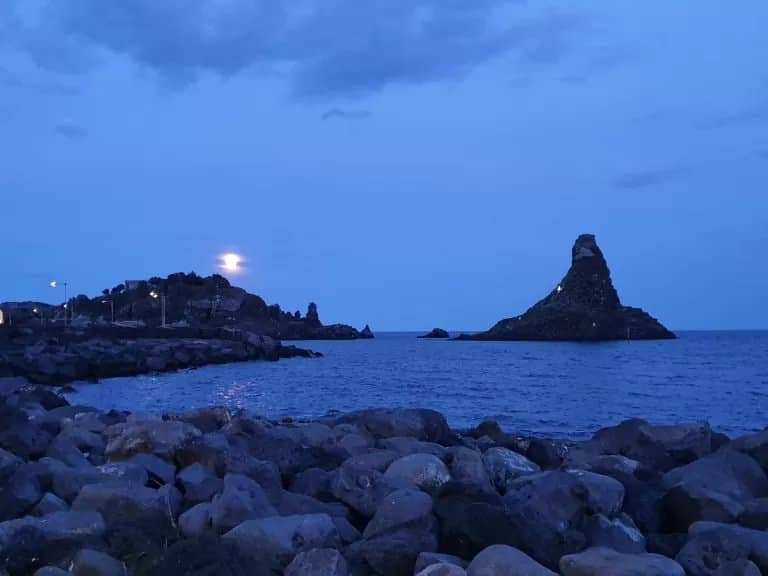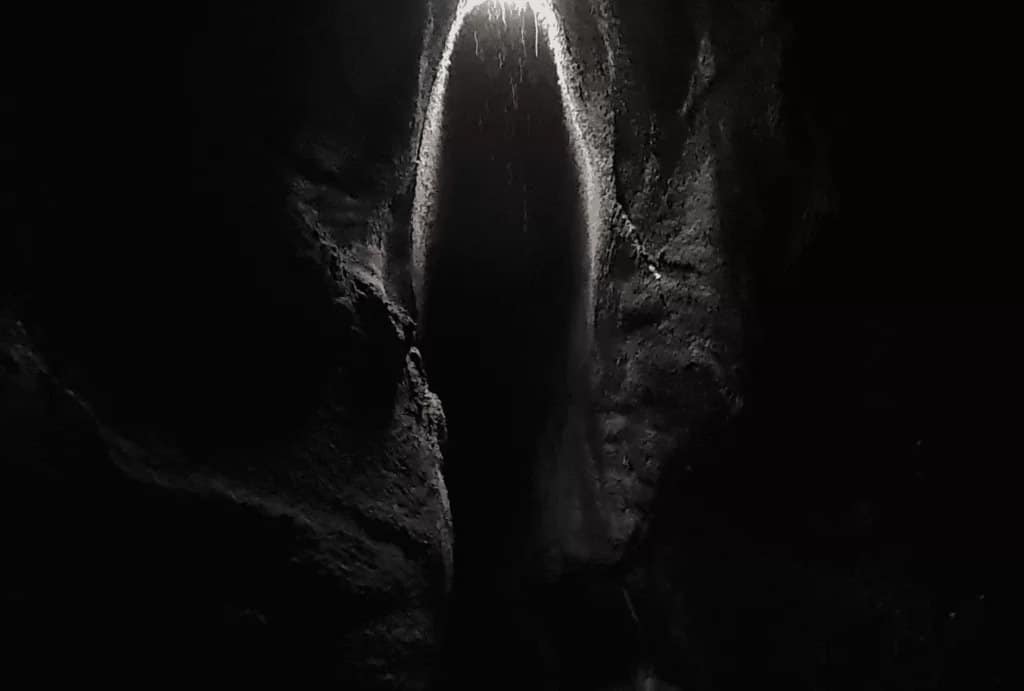Or: What Ulysses did on Mount Etna
When visiting Etna you should not only take a hike to the countless craters and lava flows, but also go and see one of the approx. 190 lava tubes (these caves are scattered over the entire Etna so you can reach them easily on any tour).
How lava tubes are formed
These subterranean tunnels develop during an eruption of a crater: when the lava flows down the slope very slowly, it cools on the surface and forms a crust (like the skin that forms on a glass of hot milk); underneath, however, the hot lava continues to flow. When the eruption is over and no new lava comes from the underground, the resulting tunnel empties. What remains is an empty cave below the surface, which often is discovered much later or only by chance, e.g. the Grotta dei Tre Livelli on the south side of Etna near the Refugio Sapienza. This cave, which is over a kilometer long and spreads over three levels (hence the name), was created during the eruption of 1792 and was only found by chance almost 200 years later, during road works in the 1960s.
Since ancient times, these caves scattered throughout the Etna area have represented for the population, sometimes a precious shelter and sometimes an indispensable reserve of water or ice. But they also fired the imagination of Greek writers who thus studded this area with countless mythical and legendary characters.
Ulysses and Polyphemus
A long, long time ago, the Cyclops Polyphemus, a one-eyed giant, lived in one of these caves with his sheep. Ulysses, the hero of the Trojan War, also passes Sicily and Mount Etna on his 10-year odyssey through the Mediterranean Sea back home to Greece. He comes to the cave of Polyphemus with his men and with wine and asks for hospitality. However, Polyphemus thinks they are thieves, locks them up in the cave and eats two of them for dinner. Since they cannot roll away the stone that closes the cave on their own, they are trapped: they can neither kill Polyphemus nor escape.
When Polyphemus also eats two men the next day, Ulysses devises the following ruse: he makes Polyphemus drunk with wine and when he sleeps, they blind his eye with a wooden stake. Polyphemus wakes up in pain, roars and lashes out, but cannot grasp Ulysses and his men because he sees nothing.
The next day, Polyphemus lets his sheep out of the cave and scans them all so that the Greeks do not get out of the cave. However, they throw themselves on sheepskins, Polyphemus takes them for sheep and they escape.
The Greeks flee to the beach and onto their boats; Ulysses, however, cannot help mocking Polyphemus from the ship. He ran to the beach in anger and throws huge boulders at the Greeks, but could not hit them. These rocks can still be seen today in the bay of Aci Trezza and are called Faraglioni di Aci Trezza.

If you do not want to believe that, you will get the following explanation (and learn how Etna was formed).
The formation of Etna
About 570,000 years ago there was a large bay at the present site of Etna, where volcanic activity began to develop. The earth’s crust was rather ‘soft’, and therefore very fluid magma (this is the name given to the lava when it is still underground) was able to erupt easily, forming many craters in different places and forming craters with shallow sides.
Such a volcano is also called a shield volcano.
Over time the bay filled up and the layers of lava, a rock harder than the pre-existing substrate, made it increasingly difficult for the underlying magma to erupt, causing it to spill out into more and more central areas, in correspondence with Etna’s magma chamber, where the greater pressure can more easily fracture the earth’s crust.
In addition, the lava began to become denser, forming layers of different consistencies with each eruption, giving rise to steeper slopes and initiating an evolutionary phase called stratovolcano.
It is precisely by analysing the lava from the Faraglioni of Aci Trezza that it has been possible to date the birth of Etna to around 570,000 years ago.
But there are still other curiosities that can be noted when observing the Faraglioni: the columnar basalt and the tops of some of these islets of different colours.
But let’s start from the beginning: The magma that formed the Faraglioni is actually material that had not been able to reach the surface. It solidified underground, but very slowly, and was thus able to crystallise geometrically, forming prismatic columns of basalt.
In the course of time, the whole area was uplifted, the softer ground that covered the lava was eroded and thus the extremely harder basalt came to the surface. But on some of the islets, a browner top layer is still clearly visible, a remnant of the soil that was ‘cooked’ in contact with the incandescent lava and has therefore hardened and remained as evidence of this transformation.
This small archipelago, made up of four larger rocks and a few smaller ones, is also called the Ciclopi Islands and is definitely worth a visit!



